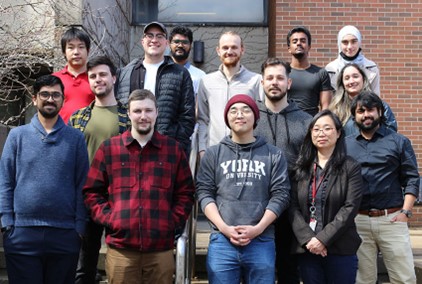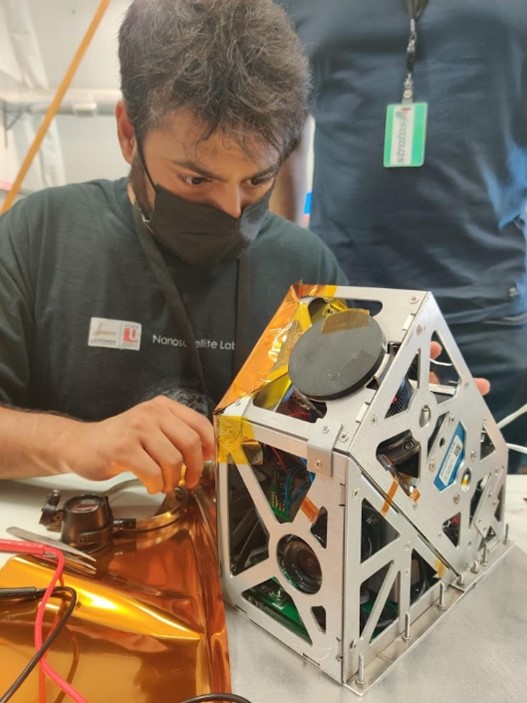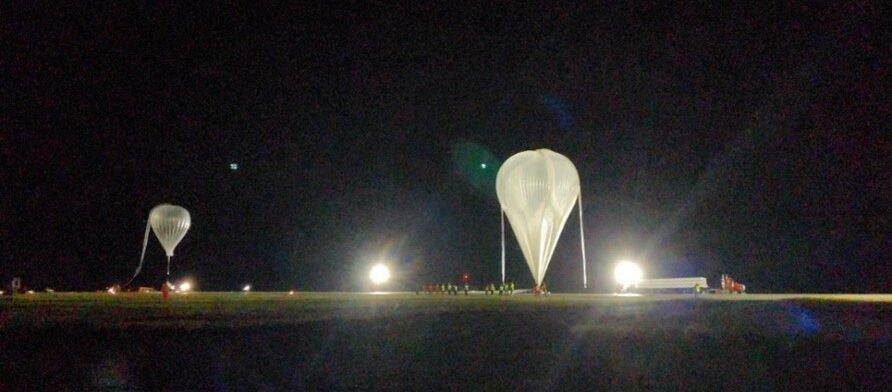Earth’s orbit is increasingly littered with debris as well as both active and defunct satellites (called resident space objects or RSOs). Sometimes RSOs collide or are purposely destroyed, which creates even more debris.

Lassonde’s RSOnar team, under the direction of Dr. Regina Lee, Lassonde professor of space engineering, is working to develop a nanosatellite-scale star tracker for space‐based space surveillance and a novel approach to RSO identification and tracking. The team is currently focused on validating the performance of the new star tracker design through simulation and in situ ground measurement.
On Aug. 21, at the Victor M. Power Airport in Timmins, Ontario, and as a part of the Strato-Science 2022 Campaign, the RSOnar team equipped a stratospheric balloon with their new star tracker equipment. After an approximately 12-hour overnight flight, the gondola carrying the equipment successfully landed and was retrieved. An important part of this technology demonstration was to prepare and operate the star tracker payload on the Canadian Space Agency (CSA)/Centre national d’études spatiales (CNES) stratospheric balloon research platform and carry out various algorithm and functionality tests. At the same time, several ground observation sites scanned the same part of the night sky to aid in the validation process.
“From the experience gained from the balloon campaign, we aim to update the star tracker design and fabricate a flight model ready for future nanosatellite missions,” said Lee, reflecting on the success of the mission. “Preliminary results are promising where we can identify and detect stars and RSOs in nearly 100K of night sky images. Further analysis will confirm the precise number and accuracy of the attitude estimation from the star tracker and RSO identified and characterized. Along with the balloon flights, thousands of ground images were collected during the same period.”
An important part of science is outreach and communication, which the students also got to experience during their trip to Timmins. The CSA arranged for 40 Indigenous youth to visit the site and learn about various science and engineering projects, the RSOnar team had the opportunity to present their work and engage with them.

“The Stratos Balloon mission was a fantastic learning opportunity for York University’s nanosatellite research team,” says Siddharth Dave, PhD candidate in the Earth and Space Science Engineering program. “Being the least experienced team there, we learned a lot of lessons on the importance of thermal shielding, flight safety certification process and launch operations. Our payload was able to capture over 93,000 images over a 12-hour flight at 37 km. Preliminary results show we have over 500 object detections, including satellites, rocket bodies and other debris. We plan to process all the data we collected, in hopes of better understanding the situation in Earth’s orbit. We also hope to fly again next year with major upgrades to our payload design, like real-time artificial intelligence and image processing, in hopes of flying to orbit one day.”
The team now returns home to complete post-processing of images and will undertake months of research to validate and verify attitude determination as well as the RSO detection, identification and characterization algorithms. Lee and the team hope to fly the payload again next year to demonstrate day-and night-time star tracker functionality as well as the RSO detection algorithm.


